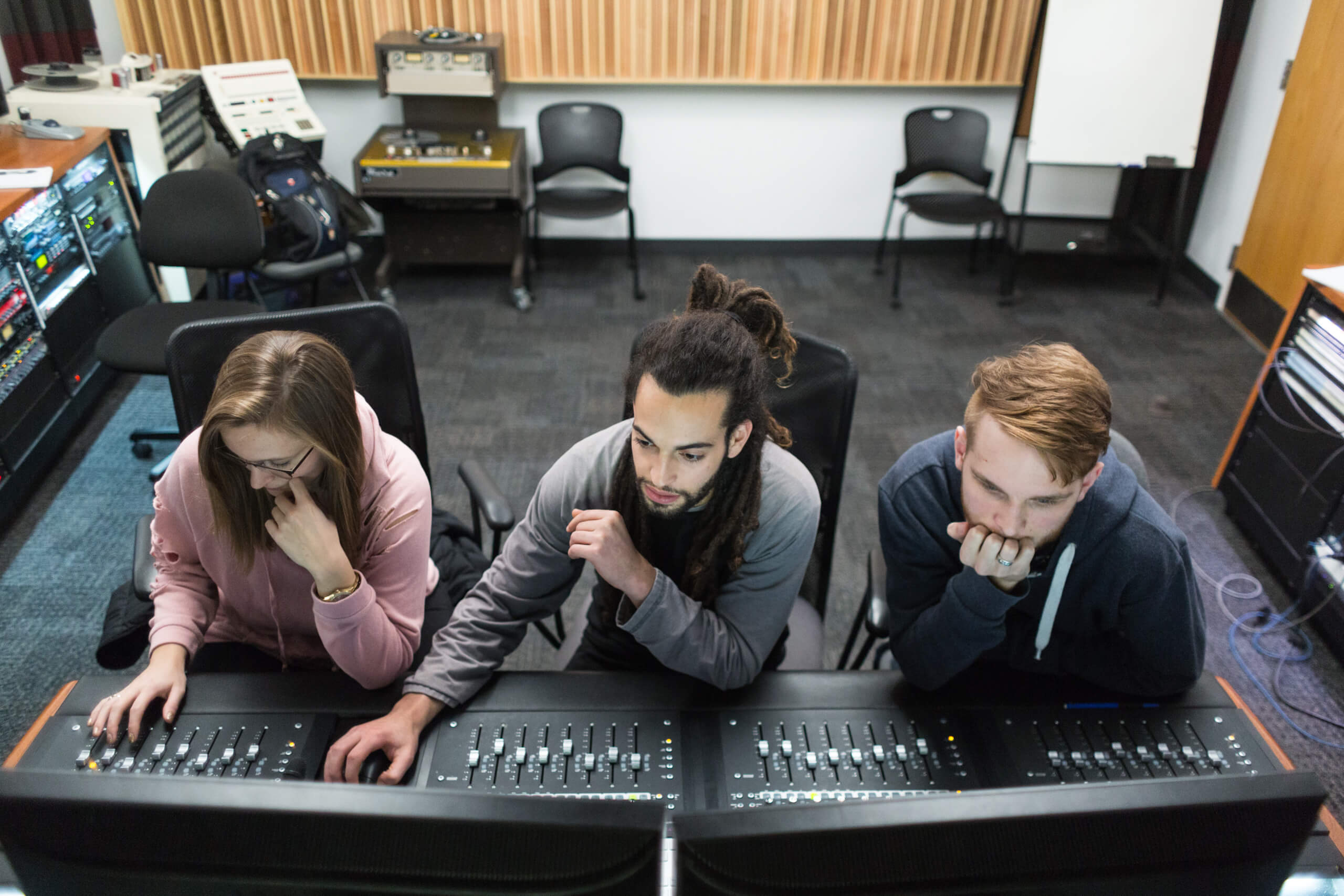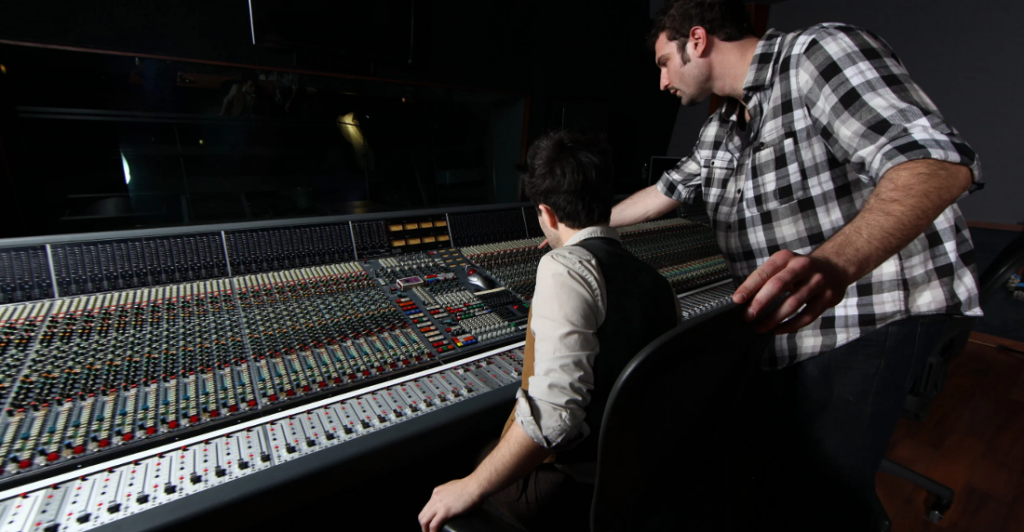To start vocal recording for beginners, invest in a quality microphone and download recording software. Focus on proper microphone placement and practice good vocal techniques to improve sound quality.
Developing a good recording environment can also make a significant difference in the final results. Understanding basic recording principles and experimenting with different settings will help beginners gain confidence and enhance their skills over time. By starting with simple setups and gradually expanding your equipment and knowledge, you can steadily improve your vocal recordings and produce professional-quality tracks.
Mastering the basics is essential for beginners to establish a strong foundation in vocal recording, leading to greater success in the long run.

Credit: www.izotope.com
Choosing The Right Equipment
When it comes to vocal recording for beginners, choosing the right equipment is crucial for achieving professional-quality results. Let’s delve into the essentials you need to get started.
Microphone Selection
Choosing the right microphone is the cornerstone of a successful vocal recording setup. Consider the following options:
- Condenser Microphones: Ideal for capturing detailed vocals
- Dynamic Microphones: Great for live performances and louder vocals
- USB Microphones: Convenient option for beginners, plug-and-play functionality
Audio Interface And Preamp
Your audio interface and preamp play a crucial role in capturing high-quality vocals. Consider the following:
- Audio Interface: Transforms analog signals to digital for recording
- Preamp: Boosts the signal from the microphone for better recording quality
Setting Up Your Recording Space
When setting up your recording space for vocal recording as a beginner, the key is to create an environment that will help you achieve the best sound quality possible. Paying attention to acoustic considerations and microphone placement is crucial to ensure a professional recording.
Acoustic Considerations
Consider the soundproofing of your room to minimize external noise interference.
Microphone Placement
Place your microphone at a suitable distance from the source to capture clear vocals without distortion.
Understanding Recording Techniques
For beginners, understanding vocal recording techniques is essential for producing high-quality audio. Proper microphone placement, room acoustics, and performance techniques can greatly impact the final result. Learning how to use pop filters and control proximity effects can help achieve a clear and professional vocal recording.
Understanding Recording Techniques When it comes to vocal recording for beginners, understanding recording techniques is essential for producing high-quality recordings. Mic techniques for different vocals and understanding polar patterns are crucial aspects that impact the quality of vocal recordings. Mic Techniques for Different Vocals Utilizing the right microphone technique is imperative to capture vocals effectively. Different vocal types require specific mic placements for optimal results. Take into account the following mic techniques for different vocals: – Table 1: Mic Techniques | Vocal Type | Mic Placement | |————|————————| | Male | 6-8 inches away | | Female | Slightly off-axis | | Rap | Close proximity | Understanding Polar Patterns Polar patterns define how microphones capture sound from various directions. Having a clear comprehension of polar patterns can greatly enhance vocal recording. The three primary polar patterns used in vocal recording are: 1. Cardioid: Ideal for solo vocal recordings 2. Omnidirectional: Suitable for group vocal recordings 3. Figure-8: Perfect for capturing duets or interviews Remember, each polar pattern serves a unique purpose and understanding their characteristics is crucial for achieving professional vocal recordings.
Optimizing Vocal Performance
When it comes to vocal recording for beginners, there are a few key techniques that can significantly enhance your vocal performance. By incorporating vocal warm-ups and techniques, as well as proper control of breathing and dynamics, you can optimize your vocal recordings for the best possible sound. Let’s dive in to explore each of these areas in detail.
Vocal Warm-ups And Techniques
Before stepping in front of the microphone, it is important to warm up your vocal cords to ensure clarity and prevent strain. Vocal warm-ups help to relax the muscles involved in singing and allow your voice to reach its full potential. Here are a few effective warm-up techniques to incorporate into your routine:
- Gently hum or lip roll to warm up your vocal cords.
- Perform tongue and lip exercises to improve articulation.
- Practice scales and vocal exercises to develop pitch control and range.
- Engage in simple vocal stretches to relieve any tension in your neck and shoulders.
By dedicating a few minutes to warm up your voice, you will be better prepared for efficient and controlled vocal recording sessions.
Controlling Breathing And Dynamics
Proper control of breathing and dynamics is crucial for achieving a polished vocal recording. Here are some techniques to enhance your vocal performance:
- Breathe diaphragmatically: Focus on breathing deeply from your diaphragm rather than shallow chest breathing. This ensures a steady flow of air and empowers your voice.
- Support your voice with good posture: Stand or sit upright to allow your lungs to fully expand and optimize your breath control.
- Master breath control exercises: Practice controlling your exhalation for longer phrases and develop steady breath control.
- Pay attention to dynamics: Experiment with variations in volume, and emphasize certain words or phrases to add depth and emotion to your recordings.
By mastering breathing techniques and dynamics, you’ll be able to maintain consistency and deliver powerful vocal performances that captivate your listeners.
Mixing And Processing Vocals
When it comes to vocal recording, the mixing and processing stage is crucial in giving your vocals that polished and professional sound. Mixing and processing involve applying various techniques and effects to enhance the vocals, ensuring they blend well with the music and stand out in the final mix. Two fundamental techniques for vocal mixing and processing are equalization and compression.
Equalization And Compression
Equalization (EQ) is the process of adjusting the frequency balance of a vocal recording. It allows you to boost or cut specific frequency ranges to improve clarity, presence, and overall tonal balance. To EQ vocals effectively, follow these steps:
- Start by listening to the vocal track and identify any problem frequencies that sound harsh or muddy.
- Use a parametric EQ plugin or hardware EQ to target and reduce those problem frequencies by applying a narrow cut.
- Boosting specific frequencies in the vocal can add warmth or brightness. Experiment with gentle boosts to find the desired tonal character.
- Remember to approach EQ in moderation. Avoid excessive boosting or cutting, as it can make the vocals sound unnatural or thin.
Compression helps control the dynamic range of vocals, ensuring a consistent and balanced level throughout the performance. This technique is particularly useful in taming loud peaks and boosting soft parts, making the vocals more present and easier to mix. Follow these steps to compress vocals:
- Start with a moderate ratio, typically around 2:1 to 4:1, to gently compress the vocals without squashing them.
- Set an appropriate threshold level so that only the louder parts trigger the compression.
- Adjust the attack and release settings to shape the envelope of the compressed vocals. Faster attack times can retain transients, while slower releases create a smoother sound.
- Keep an eye on the gain reduction meter to ensure you’re not over-compressing the vocals.
- Consider using parallel compression, where you blend a heavily compressed signal with the dry vocals to retain dynamics while adding weight and presence.
Adding Effects And Reverb
Aside from equalization and compression, adding effects can enhance the vocals further and give them a sense of space and depth. One essential effect is reverb, which simulates the natural ambience of a room or a specific environment. To apply reverb effectively:
- Choose a suitable reverb plugin or hardware unit that matches the style and genre of your music.
- Adjust the reverb parameters, such as decay time and pre-delay, to create the desired ambience. Shorter decay times work well for a close and intimate sound, while longer decay times are ideal for simulating larger spaces.
- Consider using different reverb types, such as plate, hall, or chamber, to achieve different textures and moods.
Remember to use reverb subtly, so it complements the vocals without overpowering them. Additionally, you can experiment with other effects like delay, chorus, or vocal doubling to add depth and character to your vocal recordings.

Credit: www.colum.edu

Credit: recordingconnection.com
Frequently Asked Questions Of Vocal Recording For Beginners
How Do I Set Up A Vocal Recording Studio At Home?
Setting up a vocal recording studio at home is easier than you think. Start by choosing a quiet room, invest in a good microphone, audio interface, and headphones. Soundproof the room, position the microphone correctly, and use software like Audacity or Pro Tools to record and edit your vocals.
What Equipment Do I Need For Vocal Recording?
To get started with vocal recording, you’ll need a good quality microphone, audio interface, headphones, and a computer or laptop. Consider investing in a pop filter to eliminate plosive sounds, a microphone stand for convenience, and acoustic treatment for a better recording environment.
How Can I Improve My Vocal Recordings?
To improve your vocal recordings, try these tips:
1. Warm up your voice before recording. 2. Use proper microphone technique and position. 3. Experiment with different distances from the microphone. 4. Use a pop filter to reduce plosive sounds. 5. Practice breath control and proper vocal techniques. 6. Make sure your recording environment is quiet and well-treated acoustically.
Conclusion
To sum up, vocal recording can be daunting for beginners, but with the right techniques and equipment, it can be an enjoyable and rewarding experience. Remember to practice, experiment with different recording settings, and don’t be afraid to seek advice from experienced professionals.
Keep honing your skills and you’ll see improvement over time. Happy recording!